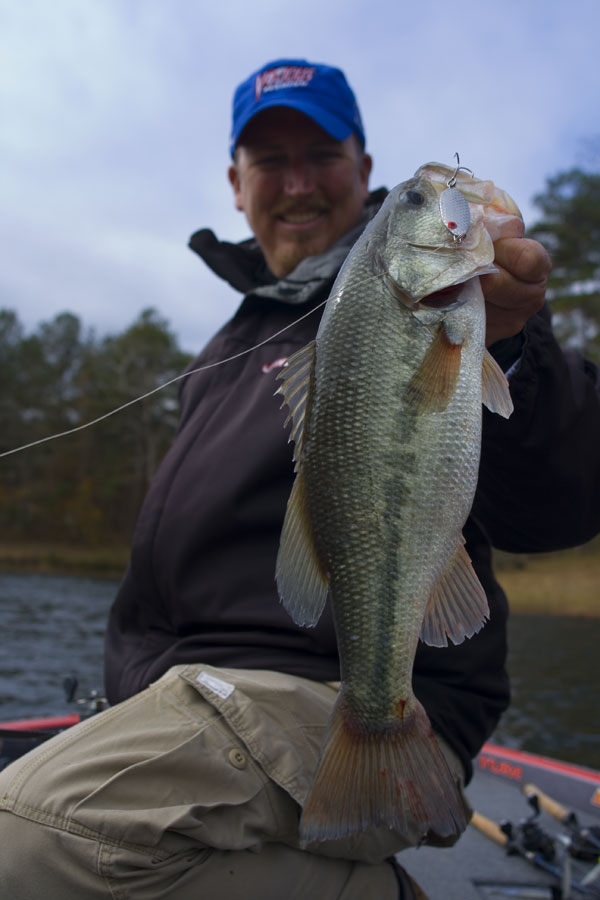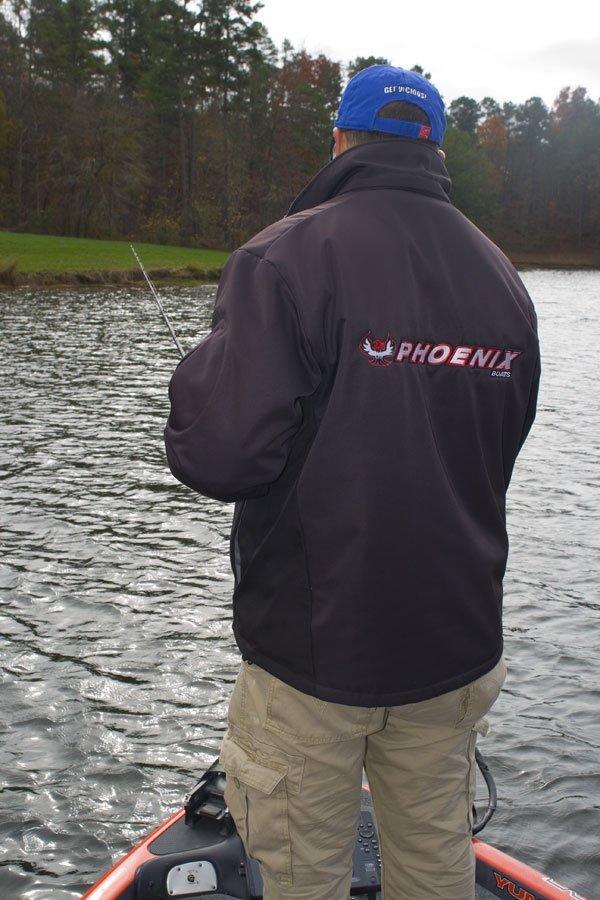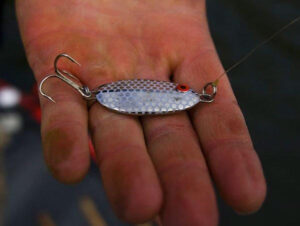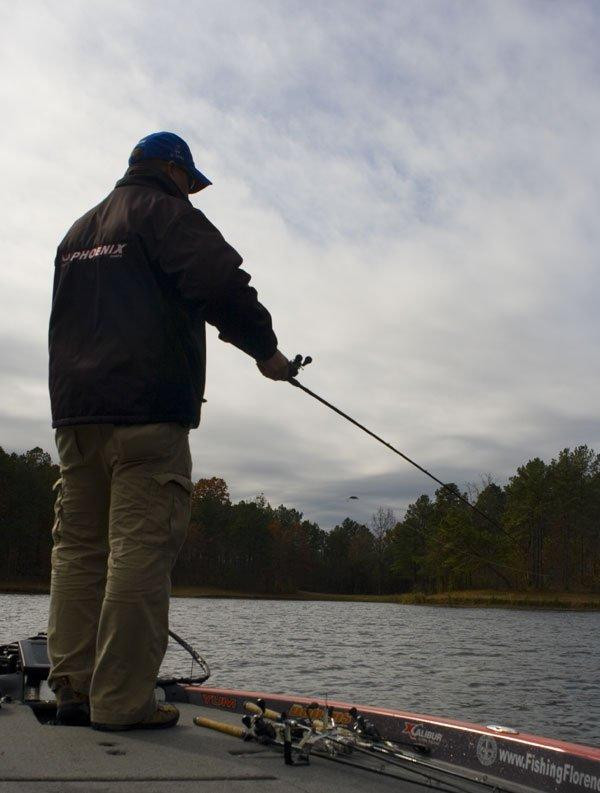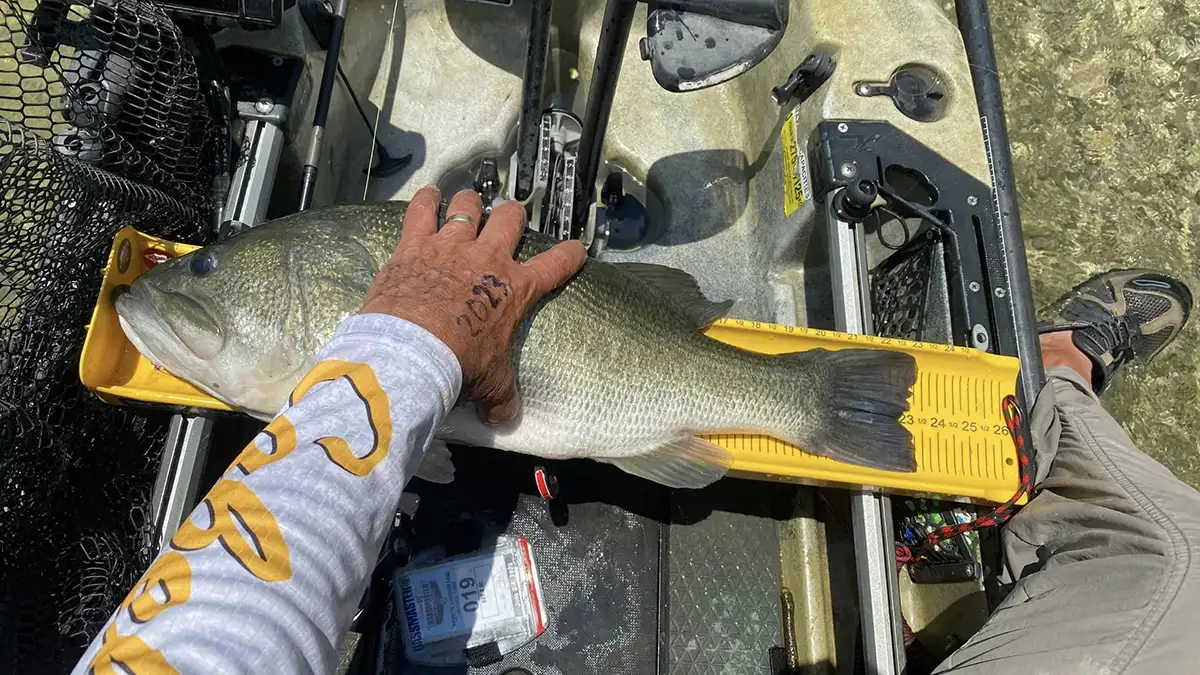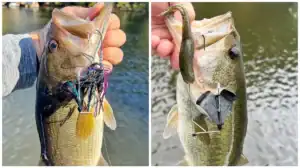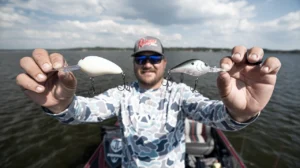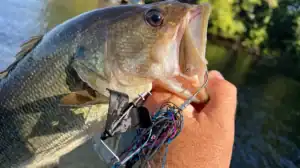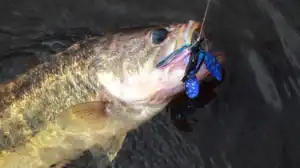Early winter fishing can, without a doubt, be some of the year’s most frustrating fishing. The days of the explosive topwater action, quick limits and raw thumbs characteristic of our fall fishing endeavors are all but a distant memory to which we desperately cling. In its absence, anglers are left with the unpleasant aftermath—lethargic bass, gloomy skies, frigid water temperatures and bone chilling air temperatures that turn even the simplest tasks into laborious undertakings.
Before you winterize your bass boat and let all of your hopes for productive fishing fall to the wayside, don’t overlook a timeless, fish catching technique—vertically jigged spoons. Alabama bass guide Jimmy Mason is renowned for his deep water fishing abilities, and he recently shared some helpful tips for vertical jigging that will salvage some tough, early winter fishing days.
Where to start
As with any unfamiliar fishing technique, location is important in order to maximize your success and quickly gain confidence. When it comes to vertically jigging a spoon, covering water is essential. As the cranking bite dies and the water temperatures drop into the lower 50s, Mason looks to the creek channels as a solid starting point.
“As soon as my fall fish start to dissipate, I heavily target creek channels,” Mason said. “As the bass move towards deep water, they use creek channels as paths to travel to their winter time dwellings.”
In order to find these creek channels, Mason looks to his Humminbird 1198c for guidance. While studying the creek’s contours and depth changes, he idles in a zigzag pattern across the width of the creek in order to cover water quickly. In the earlier stages of winter, big bass love to frequent the ledges of these channels, so any time he notices a sharp drop in water depth, Mason gets a little excited.
“While it’s definitely possible to catch a few stragglers here and there, I specifically look for big schools of fish,” Mason said. “Don’t overlook big balls of shad, either. A lot of times big bass will get in the middle of the bait clouds, which can make it hard to differentiate them from the bait.”
As winter progresses and the bass continue their voyage, it is important to begin surveying nearby river channels as well. Although the differences between a creek channel and river channel can be a bit difficult to distinguish, think of it like this: Bass use creek channels the same way we use entrance ramps onto highways. When the bass leave the creek channels, they head straight to the river channels, or highways.
The universal honey holes
Although early, transitioning winter bass are notoriously difficult to pinpoint, there is one place on nearly every fishery that is guaranteed to hold fish throughout this time of year—bridges. While it may sound obvious, we’re not necessarily talking about cranking the rip rap. Mason takes a very different approach to fishing bridges.
“As the bass move out of the creeks, on most fisheries they have to pass right through the creek channels underneath bridges,” Mason said. “If you can find a causeway in which the channel hits a silt line within a couple hundred yards, you’re going to get right and load the boat in a hurry.”
It is important to be extremely careful when targeting these bridges, however. Because these bridges funnel boats, stay on the lookout for oncoming traffic. It may be necessary to stay tight to the columns to not only better target the fish but to stay out of the flow of traffic in these funnels.
The gear
Using the correct equipment while vertically jigging spoons is essential, and again, Mason takes a slightly different approach to the technique. While many anglers opt for baitcasting gear for spoon fishing, he prefers spinning gear with jigging spoons weighing less than 1/2-ounce. When the fish get in their obstinate, sluggish winter moods, he believes they are more apt to be fooled by light line.
“I can’t overemphasize the importance of light line in cold water,” Mason said. “When you work so hard to find the fish, the last thing you want to do is spook them with line that is too visible.”
When using spinning gear, Mason uses a 7-foot, medium-heavy Dobyns Champion Spinning Rod spooled with 15-pound Vicious Braid and a 4-foot leader of 8-pound Vicious Pro Elite Fluorocarbon. For the business end, he fools a ton of bass on 1/4-ounce Bomber Slab Spoons and Cotton Cordell C.C. Spoons.
If you’re graphing a lot of fish on a windy day, don’t fret. In order to counteract high winds or rough water, Mason won’t hesitate to pull out his baitcasting gear when using heavier spoons. Due to the sheer weight and profile of bigger jigging spoons, they can be very easy for bass to dislodge. For this reason, he uses a 7-foot, medium-heavy Dobyns Savvy Casting Rod, as it has enough backbone to ensure a solid hookset.
Mason keeps his line selection fairly simple for his baitcasting gear. In areas free of gnarly cover, he opts for 12-pound Vicious Pro Elite fluorocarbon line, as its low stretch allows him to get a good hook in deep water bass. Whenever he finds himself fishing in more precarious areas, such as standing timber, 12-pound monofilament line gives him the necessary shock absorption and aids in popping spoons loose that may get hung in wood cover.
Presentation
While the name implies that one would be fishing vertically when vertically jigging, it is important, however, to understand the different between a vertical spoon and a flutter spoon. Instead of casting, ripping and covering water as you would with a flutter spoon, jigging spoons are meant to be dropped into the schools of fish.
“I don’t cast jigging spoons at all,” Mason said. “You want to simply drop it down right in front of the fish’s face and make him eat. If conditions call for casting to the fish, I’ll switch to a Heddon Sonar.”
After dropping down to the fish, Mason stresses the importance of experimentation. Because bass’ preference can change daily, even hourly, anglers should always keep an open mind in regards to specific presentations. For a good starting point, he begins with short, 1- to 2-foot upward jerks of the spoon. Whenever he catches a few, he will rip the bait more aggressively to trigger a feeding frenzy.
Conversely, in tough fishing conditions when the bass aren’t actively feeding, a more subtle approach is often necessary to draw strikes. The metabolism of a bass slows dramatically as the water cools, making them much more apprehensive to chase down a meal. When faced with slothful bass, Mason presents his bait in very short, 6-inch hops.
Regardless of the mood of the bass, there is one constant presentation factor that always holds true. No matter what, always allow the jigging spoon to fall on a controlled slack line. After lifting the rod upwards, Mason follows his slack line downward with his rod tip.
“Slack line is the only way a jigging spoon will possess the right action to make bass bite,” Mason said. “It’s important, however, to follow the slack all the way to the water in order to detect a bite. If your line stops prematurely or acts funny, set the hook immediately.”
Vertically jigging spoons are, by far, one of the most effective early winter strategies for targeting big, lazy bass. When you get on a productive spoon bite, the potential for large quantities of bass can be a great way to introduce newcomers to the sport as well. If you dedicate a few full days to finding the bass, using the right gear and learning to present your bait correctly, you just might discover a new favorite technique
